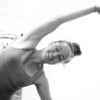Premium Continuing Education workshop
You can view a 2 minute preview. For details, scroll down below the video.
Description
The hips provide the power in all activities from simply walking to high performance movement skills. Balanced hips are also important for support and stability to the body. Working the hips in relation to the spine will improve balance, athletic skills and eliminate potential back and knee issues.
On January 23, 2011 Madeline Black came to Pilates Anytime and offered this interesting and informative workshop to a group of local Pilates instructors. The focus was to understand the role of the hips in stability, support of the trunk and balance, all necessary for strong hips. In this workshop you will learn how to intensify simple Pilates movements through precise muscle engagement and the use of advanced exercises on the reformer. Enjoy Madeline's ability to offer insight to the latest research and make it useful for you to apply in your practice right away.
Chapter 1
• Introduction lecture on anatomy of the hip as a stabilizer, supporter and power mover.
• Visuals through PowerPoint of commonly seen imbalances of the hip.
• Discussion includes the explanation of Accessory space required in a healthy hip joint and hip glide.
Chapter 2 - Assessment
This is part one of the practical portion of the workshop. Madeline teaches you three assessment tests to use to help evaluate the specific information you need to assign exercises to your clients more efficiently. You'll see Madeline guiding the students as they develop their eye practicing these assessment tests. Be there as she explains what she is seeing on several students around the room.
Chapter 3 - Exercises
In part two of the practical portion of class Madeline takes one of the teachers in attendance (Mandy Wright) through the whole process. Madeline does an assessment on Mandy, teaches her several exercises and achieves a final result that demonstrates a noticeable increase in Mandy's hip glide. Several valuable exercises are offered on the Reformer for you to use the very next time you are in the studio.
Once you purchase the workshop, you will have access to the pdf attachment. It will be located underneath the description.
About This Video
Continuing Education Credits
If you complete this workshop, you will earn:
3.5 credits from Pilates Association Australia (PAA)
The Pilates Association Australia (PAA) is an independent and not-for-profit organization established by the Pilates industry as a regulatory body for control of quality instruction, member support, and integrity within all legitimate approaches to the Pilates Method.
3.0 credits from National Pilates Certification Program (NPCP)
The National Pilates Certification Program is accredited by the National Commission for Certifying Agencies (NCCA)
Workshops: Body Pathologies and Conditions
Comments
Thank you,
Summer
You need to be a subscriber to post a comment.
Please Log In or Create an Account to start your free trial.




























